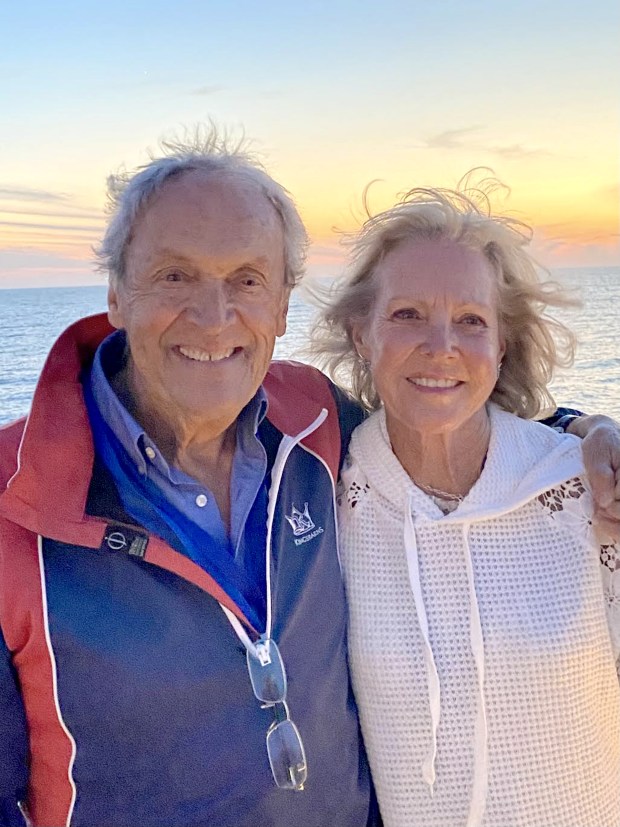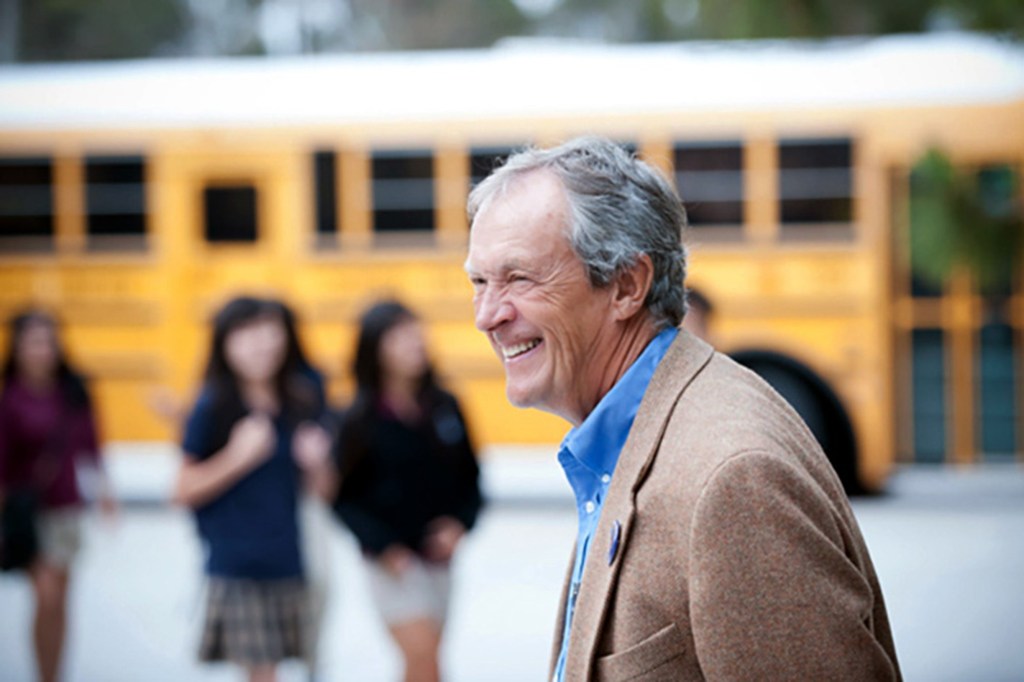Robert C. Dynes, the blunt-spoken physicist who helped turn UC San Diego into a global research power as its chancellor and who later guided the University of California through deep money problems as the system’s president, died Monday at his home in La Jolla. He was 82.
UC San Diego did not cite a cause of death for Dynes, a first-generation college graduate who spent the end of his career quietly developing a device meant to mimic the human brain at his maze-like lab in Mayer Hall.
“He loved being in the lab, he loved working with graduate students, he loved thinking about physics,” said Richard Atkinson, who preceded Dynes as UC San Diego’s chancellor. “We were lucky we got him to come to La Jolla. Caltech wanted him. So did MIT. He was a special person.”
Dyne’s passion for research didn’t wane, even in retirement.
“He still got up before 8 a.m. every morning, drove to campus to find a parking place, then worked in the lab 10 hours a day,” his wife, retired attorney Ann Parode Dynes, said this week. “That’s how much it meant to him.”
She said she honored his commitment to science by donating her husband’s body to UC San Diego for research.
Dynes’ other great passion was serving students. While chancellor at UC San Diego, he required all professors to teach a course aimed at undergraduates — an edict that didn’t sit well with some faculty. Nor did his stated belief that faculty at many universities spent more time building mini-empires than collaborating on research that could help the public.
He didn’t hesitate to speak his mind. While president of the UC, he called out state lawmakers who promised to boost funding for the UC system, then failed to do so. He also sparred with the news media over coverage of issues like tuition and faculty salaries.
He openly said he wasn’t everyone’s cup of tea, telling one historian he never expected his presidency of the UC to last more than five years because his style offended some people.
That’s exactly how it turned out.
“Bob was kind of a classic Canadian,” said Parode Dynes. “He would go with the flow and wasn’t easily irritated. But he stood up for what he believed in and took positions that weren’t necessarily popular.”
 Robert Dynes and his wife Ann Parode Dynes. (The Dynes family)
Robert Dynes and his wife Ann Parode Dynes. (The Dynes family)
Dynes grew up in a Canadian family of modest means. He was born on Nov. 8, 1942, in London, Ontario, where his father sold shoes and his mother taught kindergarten and first grade.
Early on, the young Dynes developed a deep interest in taking things apart and putting them back together, simply to learn how they worked. This evolved into a passion for physics and mathematics.
He went on to earn a bachelor’s degree in those subjects at the University of Western Ontario, then a master’s degree and a doctorate at McMaster University.
A private industry job soon followed at AT&T’s famed Bell Laboratories, the birthplace of the transistor and a key player in the development of lasers, where he rose quickly, becoming the head of semiconductors and director of chemical physics.
He arrived in the late 1960s during a golden age of research at Bell Labs, which focused on basic research rather than simply developing things that helped AT&T’s telephone business. The company tended to quietly weed out people who didn’t wander around looking for ways to collaborate — a way of running things that aligned with Dynes’ thinking.
But over time, Dynes — a warm, chatty, energetic man — grew restless and decided to move on.
“I left a declining powerhouse … and I came to an emerging powerhouse, the University of California at San Diego,” Dynes said at an education symposium in 2014.
By the time Dynes joined UC San Diego’s physics faculty in 1991, Atkinson had already laid the foundation for the school to become a research giant and felt comfortable moving on to serve as president of the UC.
Dynes was named Atkinson’s replacement as UC San Diego chancellor in 1996 — astonishing many, because he had arrived at the growing campus only five years earlier.
Dynes oversaw the creation of the Skaggs School of Pharmacy and Pharmaceutical Sciences, the Rady School of Management and the California Institute for Telecommunications and Information Technology, now known as the Qualcomm Institute. The “QI” quickly became famous for it innovations, including the creation of AlertCalifornia, a network of live cameras that detect and monitor wildfires.
In 2000, UC San Diego surpassed $1 billion in annual research funding for the first time — a figure that has since nearly doubled. That same year, Dynes launched the school’s first $1 billion fundraising campaign, successfully tapping industries like telecommunications, engineering, health care and defense for money.
He also helped found the Preuss School, a charter middle and high school on the UC San Diego campus that was among his favorite endeavors. “Preuss may have been the thing he was most proud of,” Parode Dynes said.
His achievements didn’t go unnoticed by the UC Board of Regents, which chose him to succeed Atkinson as the system’s president in 2003.
 Dick Blum, right, chair of University of the California Board of Regents, is shown with UC President Robert Dynes, center, at a regents meeting on Wednesday, March 14, 2007, in Los Angeles. (AP Photo/Nick Ut)
Dick Blum, right, chair of University of the California Board of Regents, is shown with UC President Robert Dynes, center, at a regents meeting on Wednesday, March 14, 2007, in Los Angeles. (AP Photo/Nick Ut)
It was a difficult moment in the UC’s history. The state was facing a huge budget deficit that led lawmakers to slash the university system’s funding to help stabilize the state’s finances.
It was also facing political turmoil. In a recall effort, voters removed Gov. Gray Davis from office and replaced him with actor Arnold Schwarzenegger, with whom Dynes had a deep friendship.
That friendship helped Dynes, along with others, to negotiate a compact with Schwarzenegger that stabilized and eventually increased funding for the UC and California State University systems — but that also faced criticism from students and families for ushering in significant fee hikes.
Dynes also prevented the UC from losing the right to manage and operate two national laboratories that were being scrutinized for safety and security problems. And in 2005 he oversaw the opening of UC Merced, the first new UC campus in a generation.
That same year he made another move that proved consequential — appointing Michael Drake chancellor of UC Irvine. Drake would later become the first Black president of the University of California system.
“It was one of my career highlights when he appointed me,” Drake said in a statement this week. “His bold vision and unwavering commitment to academic excellence positioned the University for national impact and future success that is still evident today.”
But Dynes’ tenure leading the university system also was marked by controversy, notably a scandal over executive compensation that surfaced in 2006. A state audit revealed that the UC’s system for paying top managers and professors was filled with irregularities, including the awarding of pay or perks without proper approval.
Dynes introduced changes in an effort to fix the problems. But his handling of the matter cost him the support of some members of the Board of Regents and the state Legislature.
In August 2007, he announced that he would step down the following year. He didn’t attribute the decision to the scandal. Instead, he made reference to his wife, Ann, whom he had married earlier that year. He had been married twice previously.
During a conference call with reporters, Dynes said, “I am in love with my wife, and it’s time for me to spend time with her before it’s too late. You never accomplish everything you want to accomplish.”
He also had more time to work with civic and scientific organizations and did so — notably with the San Diego Foundation and the La Jolla Institute for Immunology.
In addition to his wife, Dynes is survived by daughter Victoria Martino and by three grandchildren, UC San Diego said.
Originally Published: July 2, 2025 at 6:06 PM PDT
